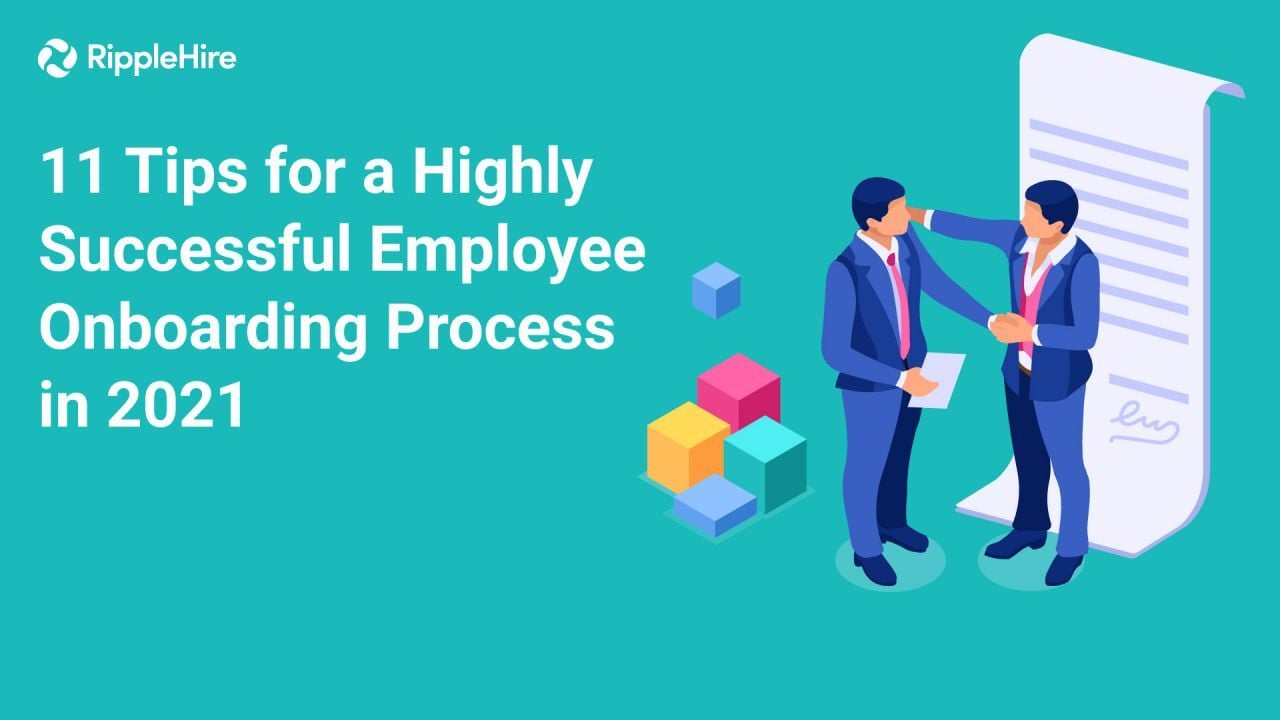Employee onboarding has always been a critical phase—but in 2025, it’s not just about smooth transitions. It’s about setting the foundation for retention, productivity, and performance. And while technology, hybrid work, and AI have transformed how we hire, one truth remains unchanged: a bad onboarding experience can undo months of effort.
As recruiters, we often wonder—why do high-potential candidates with stellar credentials sometimes fail to deliver? The answer often lies in what happens after the offer is rolled out. Poor onboarding kills motivation before it can turn into momentum.
Let’s fix that.
Here are 11 practical tips to make onboarding a success—whether you're welcoming employees in person, remotely, or in a hybrid setup.
1. Start with clarity: Who are you as an organization?
Candidates today do their homework. They’ll skim your Glassdoor reviews, analyze your leadership presence on LinkedIn, and scroll through your culture page. So don’t wait for day one. Align your digital presence with your actual work culture. Make sure your values, communication tone, and internal behaviors all speak the same language.
When your brand messaging is authentic, onboarding begins before the first login.
2. Set expectations before the first day
The hiring experience shouldn't feel like a sales pitch. Be clear with candidates early on—about policies, work ethics, hybrid norms, performance standards, and what success looks like. Especially if you're hiring high-performers, clarity beats sugarcoating.
They’ll thank you later for being honest upfront.
3. Make your offer letter feel like a welcome, not a contract
Don't treat the offer letter as a legal formality. A few human words expressing your excitement to welcome the new joiner can go a long way in building trust. Add a warm message from the hiring manager or team. That personal touch shows that this is not just another transaction.
4. Map out the office—or the virtual workspace
Whether it's pointing them to the cafeteria or showing them how to access internal Slack channels, orientation matters. New joiners shouldn’t have to ask twice to find what they need.
For in-office roles, give a tour. For remote hires, create a simple virtual onboarding guide that covers essential tools, team contacts, and a visual org chart.
5. Share what a typical workday looks like
This isn't about bombarding them with tasks on day one. Let them observe, ask questions, shadow a few meetings, and understand the pace of the work. A simple “day in the life” walkthrough can ease nerves and create familiarity.
Managers can drive this, but recruiters can support by prepping them beforehand.
6. Enable, don't just onboard
Sending a welcome email and a laptop isn't enough. Ensure access to internal tools, email IDs, key documents, and task management systems. For remote hires, tech delays are one of the biggest onboarding frustrations.
Double-check everything before day one. No one wants to spend their first week chasing IT tickets.
7. Communicate the “why” behind the role
Don’t just hand over a JD. Walk them through how their role contributes to the bigger picture. What does success in this role look like? What does growth look like over six months? A sense of purpose makes a huge difference in early engagement.
8. Make them feel welcome in week one and two
The first two weeks are make-or-break. Set up check-ins. Celebrate the small wins. Encourage managers to assign onboarding buddies. Recruiters can provide frameworks to help managers structure this well, especially for first-time people leaders.
9. Facilitate relationship-building
Whether through coffee chats, informal town halls, or Slack intros, encourage social connections. This is particularly important for hybrid or distributed teams. Make space for new hires to meet their colleagues beyond just work conversations.
10. Collect early feedback—and act on it
Don’t wait till the 90-day review. Pulse surveys, 1:1 check-in, and informal catchups can help you catch red flags early. A 10-minute chat at the end of week one or two can uncover blockers you didn’t see coming.
11. Automate the grunt work with onboarding tech
No matter how well-intentioned your onboarding is, things will fall through the cracks without the right support. Use a high-performance ATS like RippleHire to automate onboarding workflows, enable communication between teams, and track new hire journeys with ease.
With RippleHire, you can design onboarding that’s not just efficient, but actually delightful—for recruiters, managers, and employees alike.
Final Thoughts
In 2025, onboarding isn’t just HR’s responsibility. It’s a full-team effort—recruiters, managers, IT, and culture champions all play a role in making new hires feel seen, heard, and ready.
Done right, onboarding drives retention, performance, and advocacy.
So, what’s your next onboarding improvement?
FAQs
Q1. What is employee onboarding and why is it important?
Employee onboarding is the process of integrating a new hire into an organization. It includes everything from paperwork and training to helping new employees understand their role and culture. A well-structured onboarding process improves retention, engagement, and long-term productivity.
Q2. How long should a good onboarding process last?
A successful onboarding process typically lasts between 30 to 90 days. Some companies extend it up to six months or a year, especially in complex roles or industries. The focus should be on consistent engagement, clarity, and support throughout the period.
Q3. What tools help streamline onboarding in 2025?
Using a high-performance ATS like RippleHire enables automated onboarding checklists, document collection, task reminders, and seamless coordination between HR, IT, and hiring managers. It ensures consistency and a smoother experience for every new joiner.
Q4. How does onboarding affect employee retention?
Poor onboarding leads to early disengagement and higher attrition. When new hires are supported with clear expectations, timely enablement, and meaningful interactions, they’re more likely to stay longer and contribute effectively.
Q5. Can remote onboarding be as effective as in-person onboarding?
Yes, with the right tools and communication plan. Remote onboarding needs structured orientation, timely IT enablement, regular check-ins, and clear documentation to ensure new hires feel included and productive from day one.















